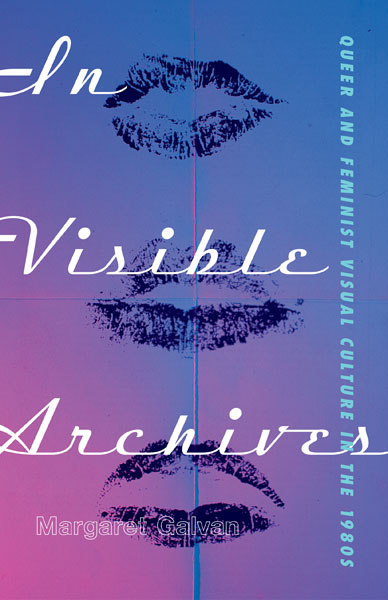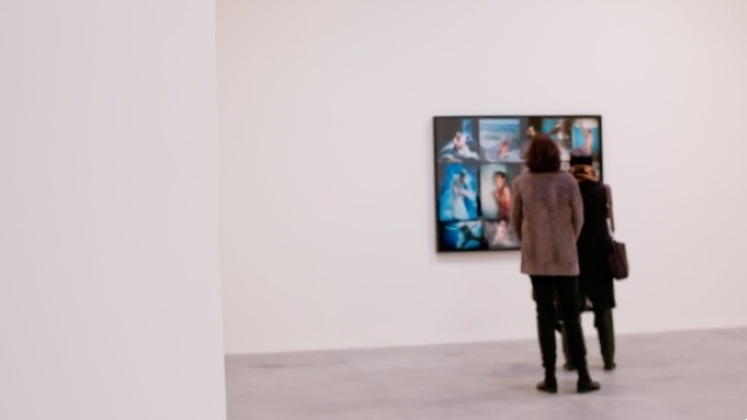Margaret Galvan‘s In Visible Archives explores the political power of archival material in shaping feminist and queer futures. Applying archival studies and comics scholarship to work from the 1980s by visual artists including Alison Bechdel and Nan Goldin, Galvan’s timely book underscores the importance of visibility in ongoing activism and community-building, writes Max Shirley.

Galvan examines how several American visual artists, including the cartoonist Alison Bechdel and photographer Nan Goldin, incorporate activism in their work and create a sense of collectivity.
The political and transformative potential of feminist and queer archives is centre stage in Margaret Galvan’s debut monograph, In Visible Archives: Queer and Feminist Visual Culture in the 1980s. Across five concise chapters, Galvan examines how several American visual artists, including the cartoonist Alison Bechdel and photographer Nan Goldin, incorporate activism in their work and create a sense of collectivity. “All these women’s artworks shaped feminist futures,” Galvan writes, “but how they mobilized image and text together to plant the seeds for future community to bloom has been overlooked” (4).
Galvan locates her monograph in the fields of both archival studies and comics scholarship. Building on the work of Hilary Chute and Ramzi Fawaz, among other theorists, Galvan considers the “multilayered relationships between image and text” and examines how “publication venues frame our readings” of images (6-7). Specifically, Galvan pays close attention to the sequencing of comics, photographic slideshows, exhibition guides and other visual materials. How these cultural artefacts are produced, sequenced, displayed and stored contributes to their political and affective power, as well as their potential to build new communities.
Against a backdrop of the 1980s’ sex/porn wars, the phobic Reagan administration, and the AIDS epidemic, these feminist and queer visual practitioners were alert to ‘the hard-won and narrowly kept conditions of visibility for diverse sexual identities’.
The book’s title, In Visible Archives, embodies the tenuous and paradoxical nature of visibility, which Galvan seeks to underscore. For example, the scholar analyses art that is held in both accessible, established spaces and more precarious locations – some in university archives and campuses, while volunteers in community-based and grassroots spaces tend to other items. Indeed, the women artists featured in the text question the heightened visibility of some bodies over others through their aesthetic work. Against a backdrop of the 1980s’ sex/porn wars, the phobic Reagan administration, and the AIDS epidemic, these feminist and queer visual practitioners were alert to “the hard-won and narrowly kept conditions of visibility for diverse sexual identities” (1-2). Ensuring the continued visibility of minoritarian lives and identities is further echoed in the text’s structure, as Galvan closes each chapter with a short reflection titled “Archives and Afterlives”. These cumulative sections examine the contemporary resonances of queer and feminist art from the late twentieth century and allow Galvan to attend to the important but unfinished business of community-building and political activism.
In the opening three chapters of the book, Galvan focuses her investigation on the work of graphic artists and cartoonists. The first chapter explores the enduring legacy of the 1982 Barnard Conference on Sexuality and the beginning of the Feminist Sex Wars. Galvan considers three graphic artists – Hannah Alderfer, Beth Jaker, and Marybeth Nelson – who designed the Barnard Conference’s accompanying handbook, Diary of a Conference on Sexuality. Focusing on its collage aesthetics, Galvan begins to underscore the centrality of the image to her analysis and argues that these three artists empowered women’s sexual identities through a visual form that “embraced rather than censored erotic representations” (49).
Reading across several grassroots and community-based archives […] Galvan demonstrates the importance of archival practices in ensuring the visibility of queer and queer-adjacent communities.
Chapter Two offers a series of close readings of the comics of two formative cartoonists: Lee Marrs and Roberta Gregory. In clear, straightforward prose, Galvan explores the pairs’ foundational and pioneering work in the lesbian comics scene and demonstrates how queer communities and subcultures were built through the publication and circulation of grassroots newspapers and zines, such as Gay Comix. At times in this chapter, the close reading and analysis verges on description, but this is a minor complaint. Alison Bechdel’s long-running series Dykes to Watch Out For is the primary concern of the third chapter – one of the book’s strongest. In this section, Galvan offers an adroit analysis of how Bechdel incorporates activism into her modes of artistic production. Reading across several grassroots and community-based archives – in addition to the collection of Bechdel’s papers at Smith College – Galvan demonstrates the importance of archival practices in ensuring the visibility of queer and queer-adjacent communities.
For the final two chapters of In Visible Archives, Galvan moves away from cartoons to survey the work of the writer Gloria Anzaldúa and the New York-based photographer Nan Goldin. The penultimate chapter attends to the drawings and sketches of Chicana feminist scholar Anzaldúa. Galvan argues for a renewed consideration of how Anzaldúa utilised visual storytelling as part of their educative practice. The final chapter contends with Goldin’s curatorial work in her seminal photobook, The Ballad of Sexual Dependency, and her 1990 exhibition, Witnesses: Against our Vanishing. Here, Galvan provides an inciteful analysis of how Goldin sequences her photographs and curates the work of others in order to “guard against loss” and preserve communities in the face of the AIDS epidemic (198).
The radical potential of art and the archive is unquestionable. What Galvan ultimately illustrates is the need to keep making art and to keep building community.
As the rights of those most vulnerable in society are unceremoniously stripped in the name of culture wars stoked by right-wing parties and politicians, visibility continues to be of the utmost importance. In Visible Archives is a timely intervention which continues Goldin’s project of guarding against loss. Galvan lucidly demonstrates the importance of community-based archives, activism and art and provides an accessible introduction to the work of several women visual artists of the 1980s. The radical potential of art and the archive is unquestionable. What Galvan ultimately illustrates is the need to keep making art and to keep building community.
Note: This review gives the views of the author, and not the position of the LSE Review of Books blog, or of the London School of Economics and Political Science.
Image credit: Susan Sermoneta on Flickr.

